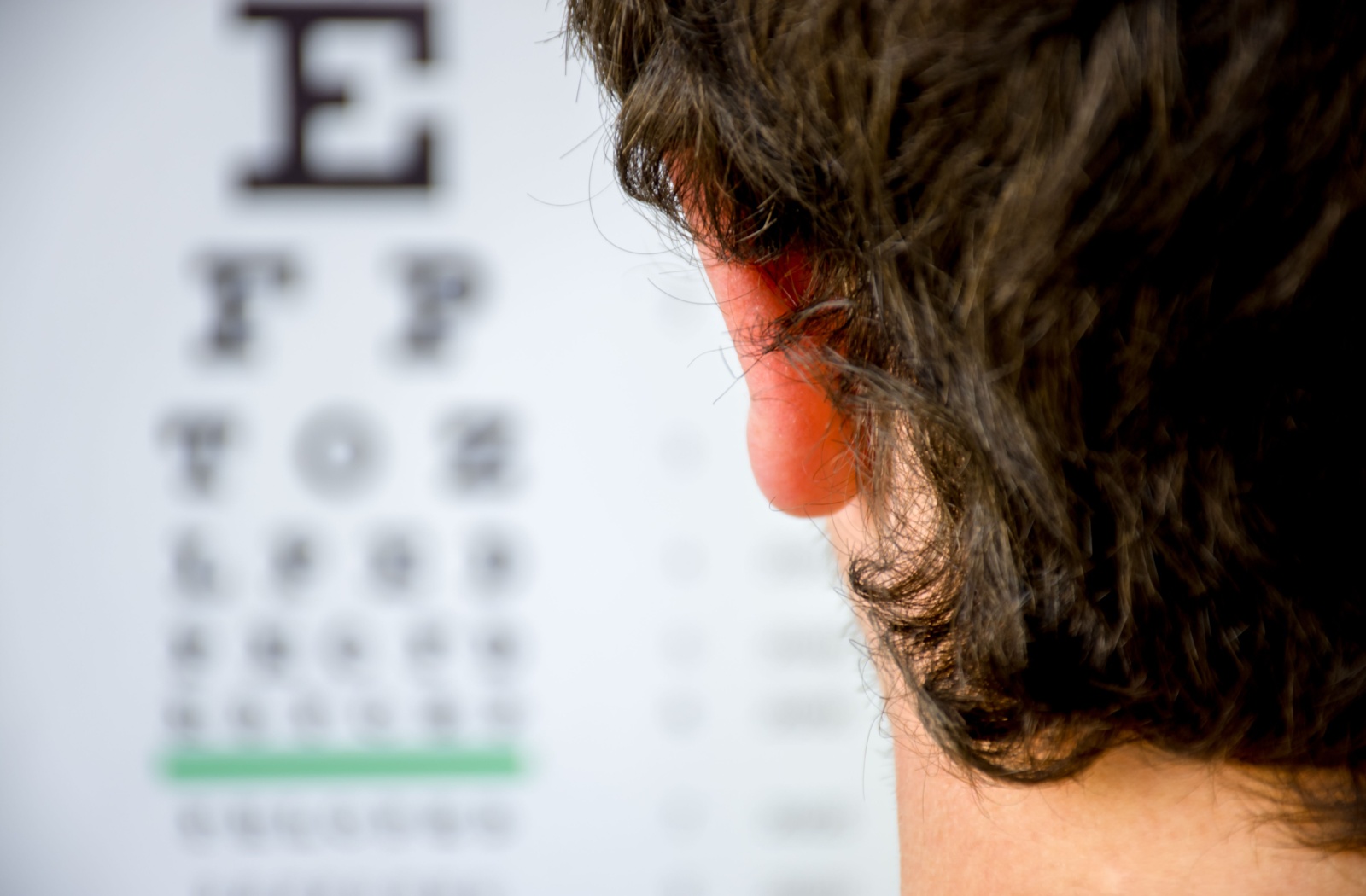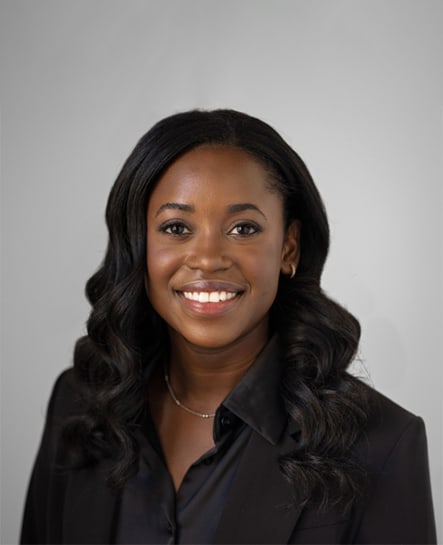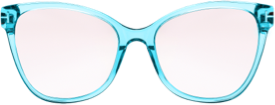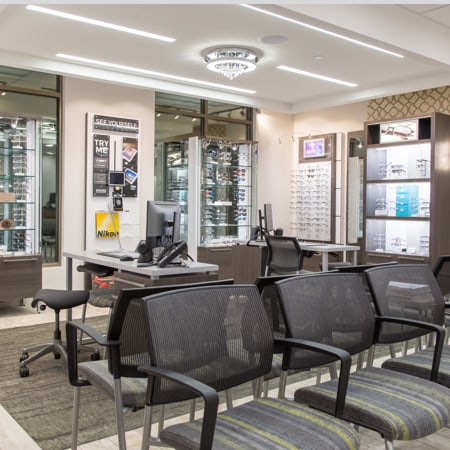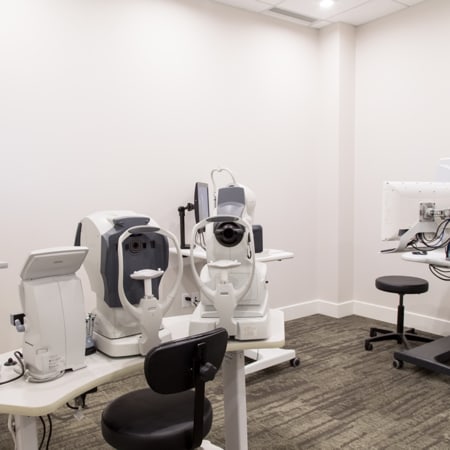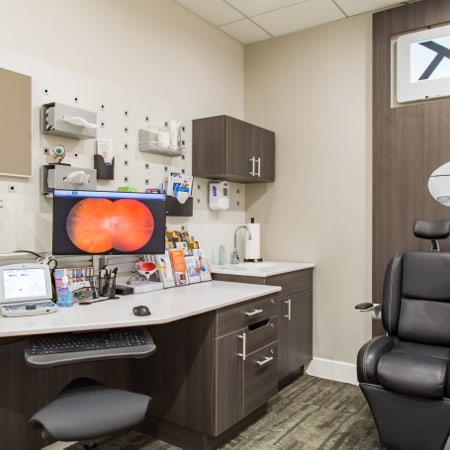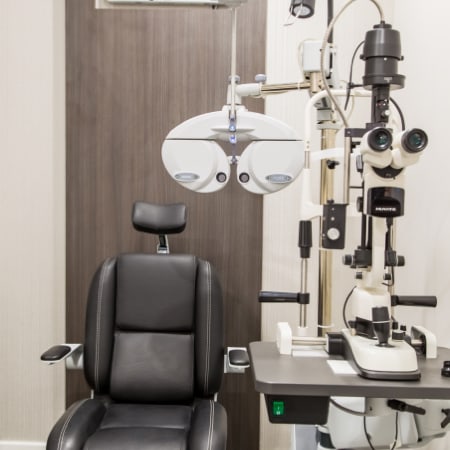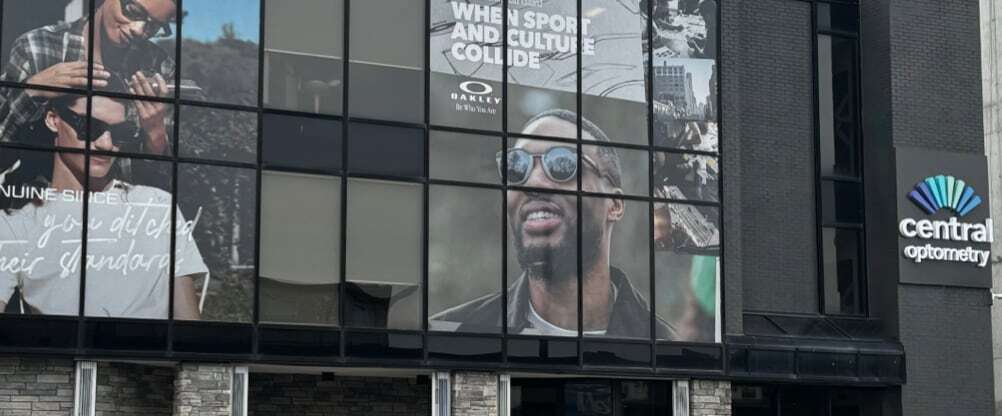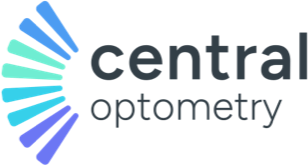Vision issues are becoming increasingly common worldwide. Myopia and hyperopia are two of the most frequently diagnosed refractive errors, affecting millions of people globally. Myopia, or nearsightedness, affects around 30% of the global population, while hyperopia, or farsightedness, is less common but still impacts many lives.
Myopia causes distant objects to appear blurry, while hyperopia is effectively the opposite and makes nearby objects blurry. The good news is that, once you understand the difference between these common conditions, your optometrist can help correct vision and even slow your child’s myopia progression.
What Is Myopia?
Myopia, or nearsightedness, is a condition where close objects appear clear, but distant objects are blurry. This happens because the eye’s shape causes light rays to bend incorrectly, focusing images in front of the retina rather than on it.
In a normally-shaped eye, light rays enter the eye, pass through the lens, and focus directly on the retina, which is the light-sensitive layer at the back of the eye. However, in individuals with myopia, the eye is typically longer than average or the cornea (the front surface of the eye) may be too curved. This causes light to converge in front of the retina instead of directly on it, resulting in blurry vision for distant objects.
Genetics can play a significant role in myopia development, as it often runs in families.
Symptoms of myopia often become apparent during childhood. Children with myopia may:
- Squint
- Sit very close to the television
- Complain of headaches and eye strain
- Rub their eye frequently
- Have trouble paying attention in school.
What Is Hyperopia?
Hyperopia, on the other hand, is a condition where nearby objects appear blurry. This condition is sometimes called farsightedness and occurs when the eyeball is too short or the cornea is too flat, causing light to focus behind the retina. Like myopia, hyperopia can be hereditary. While it can affect people of all ages, it’s often present at birth and can change as the eye develops.
Many people have some amount of hyperopia without knowing it, but unless it affects their ability to complete daily tasks, it typically isn’t a problem. When hyperopia becomes a problem, symptoms include:
- Difficulty focusing on close tasks
- Eye strain
- Headaches
- A general sense of tiredness after close work
- Poor reading ability
Hyperopia can significantly affect daily activities, making tasks like reading or using digital devices challenging.
Is Hyperopia the Same as Presbyopia?
Another condition that can affect how well you see nearby objects is presbyopia. However, while hyperopia is a refractive error typically caused by the shape of the eyeball that can affect people of any age, presbyopia is a natural age-related condition that usually begins to develop in your 40s or 50s.
This condition occurs as the lens of the eye becomes less flexible over time, making it difficult to focus on close objects. While they both affect your ability to focus on nearby objects, they’re distinct conditions with different causes.
Strategies for Myopia Control
Early intervention is crucial when it comes to managing myopia. The younger a child begins myopia control treatments, the more effective these strategies will be in slowing down the progression of the condition. Early intervention not only minimizes the risk of developing high myopia, but also reduces the likelihood of future complications, such as:
- Cataracts
- Glaucoma
- Retinal detachments
- Myopic maculopathy
Regular eye exams and timely myopia control measures can safeguard your child’s vision and overall eye health. Optometrists can offer a range of myopia control strategies tailored to meet the unique needs of each child, some of which will be discussed below.
Orthokeratology (Ortho-K) Lenses
Ortho-K lenses are specially designed contact lenses worn overnight to reshape the cornea temporarily. These lenses can allow children to enjoy clear vision during the day without the need for glasses or daytime contacts, making them particularly beneficial for active children who engage in sports and outdoor activities.
In addition to their ability to correct vision, ortho-k can slow myopia’s progression by up to 56%.
Atropine Eye Drops
Low-dose atropine eye drops are typically used to dilate the eye during an eye exam, but can also be an effective method for slowing myopia progression. Administered daily, these drops help control eye growth and are often recommended alongside other vision correction methods such as glasses or contact lenses.
ACUVUE Abiliti Soft Contacts
ACUVUE Abiliti Soft Contacts are designed for comfort and breathability while controlling myopia progression. The centre of these lenses works just like traditional lenses, manipulating how light focuses on the retina to offer clear vision. The outer rings defocus light, signalling the eye to slow its growth.
This means that children who wear ACUVUE Abiliti lenses can see more clearly while also helping manage their myopia.
ZEISS MyoCare Lenses
ZEISS MyoCare lenses use a system of defocusing rings to control myopia progression. These eyeglass lenses feature a central zone of clarity, while the outside forms a series of rings, much like a bullseye, which helps manage how light focuses on the retina.
Once again, this controlled peripheral defocus cues the eyes to stop growing, slowing myopia’s progression.
Clear Vision, Healthy Life
Taking proactive steps to manage myopia and hyperopia can significantly impact your child’s overall quality of life. At Central Optometry, we’re dedicated to helping your family maintain clear vision. Our team of experienced optometrists offers comprehensive eye care services tailored to your needs.
Whether you’re concerned about myopia progression or need solutions for hyperopia, we are here to support you every step of the way. If you’re ready to take control of your vision health, book an appointment with our friendly team today!

